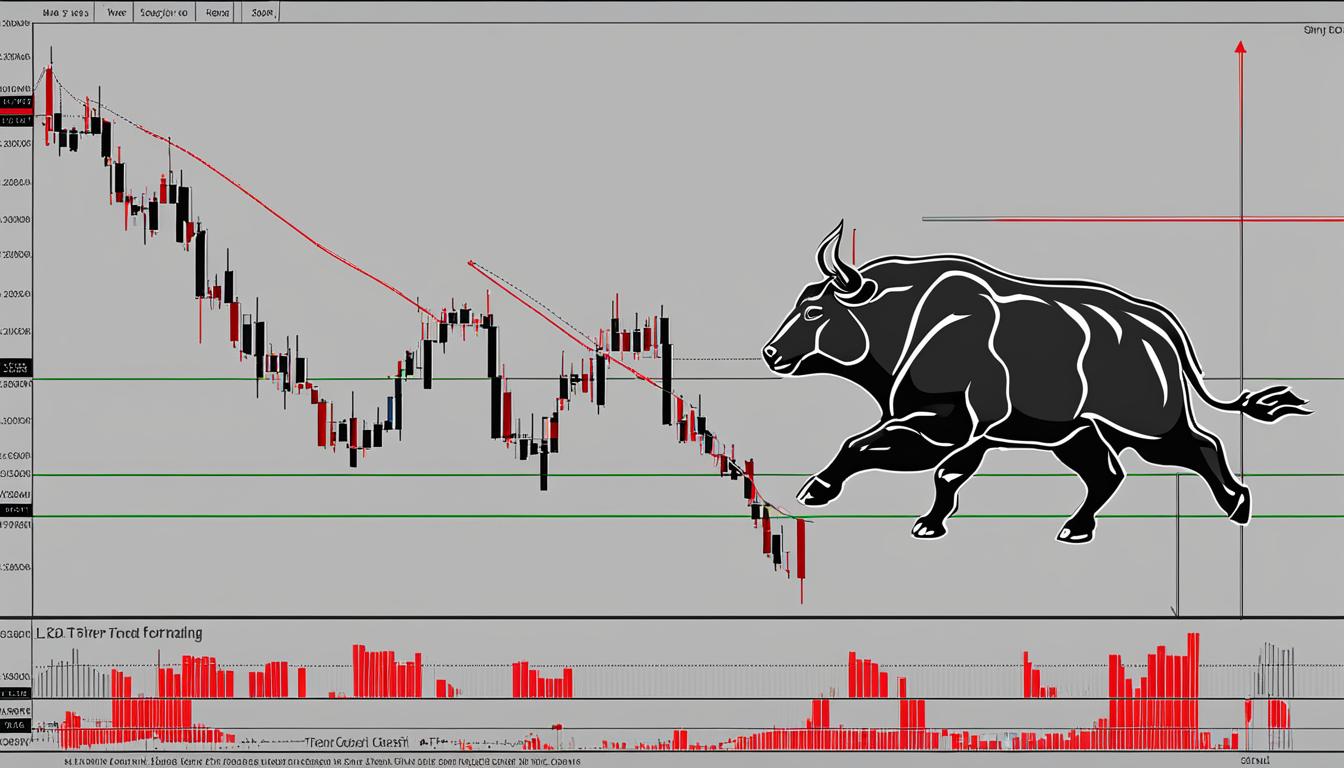In the high-speed arena of day trading, one of the most influential strategies a trader can arm themselves with is the mastery of stop loss orders for day traders. Grasping the nuances of setting effective stop loss in day trading is not just a skill—it’s a safeguard that buffers your financial investments against the unpredictable ebb and flow of the market. Precision in unsing a stop loss calculator for day trading can distinguish between successful trades and avoidable losses.
Day traders are often at the helm of rapidly changing market conditions, and a comprehensive understanding of stop loss strategies can be the lifeboat in a sea of uncertainty. This article delves deep into the practice of effectively deploying stop loss orders—ensuring that your day trading voyage is fortified against market turbulence and positioned for potential profitability.
Understanding Stop-Loss Orders in Day Trading
A solid understanding of stop-loss orders is pivotal for day traders seeking to mitigate risks and protect their capital. Essentially, these orders act as safety nets, allowing traders to define their risk threshold and keep potential losses within manageable bounds. By predetermined conditions, the order instructs your broker to sell a security when it reaches a specific loss point, thus executing a strategy on how to choose the best stop loss for day trading.
Consider these stop loss tips for day traders to ensure that you set your orders effectively:
- Analyze historical performance and volatility of the asset to set realistic stop-loss levels.
- Define your risk tolerance level before entering a trade and align your stop loss orders with it.
- Regularly review and adjust stop loss orders to align with changing market dynamics and asset performances.
- Understand the potential for slippage and factor this into your stop loss strategy to prevent larger-than-expected losses.
The philosophy behind utilizing stop-loss orders is not to predict the market’s movement but to control your reaction to whatever the market might present. Many day traders favor a fixed percentage method, often setting their stop loss at a level 5 to 10% below the purchase price to maintain a disciplined approach. Although slippage might compromise the planned execution price, stop-loss orders are still an indispensable tool for day traders striving to navigate the turbulent waters of market volatility.
How to Determine the Right Stop-Loss Order
Mastering day trading stop loss strategies is an essential component of a trader’s toolkit. Setting effective stop loss in day trading not only helps in safeguarding investments but also instills discipline in the highly volatile trading environment. Let’s delve into methods for establishing a robust stop-loss order, taking into account various factors that contribute to a well-rounded day trading strategy.
Assessing Your Risk Tolerance
Before venturing into specific stop-loss strategies, it’s imperative to evaluate your level of comfort with risk. Your risk tolerance will determine how tight or loose your stop-loss orders should be. A conservative trader may prefer to set tighter stop-loss orders as a way to preserve capital, whereas a risk-tolerant trader may afford more room for market fluctuations, hoping for larger gains.
Using Percentage-Based Stop Loss
A percentage-based stop loss is straightforward—simply decide the percentage of the trade you’re willing to lose, and set your stop loss accordingly. A common approach might be setting a stop-loss order at 5% to 10% below the purchase price. This technique is not only simple to implement but also tailors to the individual financial thresholds of traders.
Identifying Stock Support Levels
Another intelligent technique is identifying support levels—the price point where a stock typically doesn’t fall below—when setting stop-loss orders. This requires a keen understanding of historical performance and technical analysis, as it’s based on past behavior to anticipate future movements. By setting your stop loss around or just below support levels, you provide a cushion that aligns with established market patterns.
Implementing Moving Average as a Guide
The moving average, often used as a market trend indicator, can also be an effective guide for setting stop-loss orders. If a stock price falls below its moving average, it may signal a downturn, thus justifying the initiation of a stop-loss order. Utilizing moving averages helps to smooth out short-term fluctuations and provides insight into longer-term trends.
Deciding on the right stop-loss order is a blend of science and art—combining statistical analysis with a trader’s personal risk profile. As you can see, a mix of understanding market indicators, assessable risk percentages, and historical stock behaviors can shape a well-founded approach to mitigating potential losses in day trading.
Best Stop Loss for Day Trading
For day traders, the art of minimizing losses hinges on an impeccable risk management system. Integrating stop loss orders with trailing stops delivers a potent combination to adapt to market conditions, safeguard capital, and potentially boost profits. Understanding how to choose the best stop loss for day trading requires strategic balancing, and various tactics will cater to different trading styles and risk appetites.
Commencing with a traditional stop loss, one might set it to trigger at a 2% drop below the market price. As a secondary layer, implementing a trailing stop at 2.5% provides elasticity, allowing for the appreciation of gains while still affording downward protection. This dual strategy hinges on the dynamism of trailing stops, which ascend with rising share prices and establish a new safety net, locking in profits effectively.
In practice, stop loss orders for day traders must consider volatile market swings and the likelihood of rapid price changes. It is therefore crucial to establish a method for selecting the optimal stop loss points. Below, we explore factors that may influence the decision-making process:
- Market Volatility: In highly volatile markets, wider stop loss margins may prevent premature exit.
- Liquidity: More liquid stocks may accommodate tighter stops, given their smoother price movements.
- Risk-Reward Ratio: Balancing potential gains against acceptable losses to determine appropriate stop levels.
| Strategy | Pros | Cons |
|---|---|---|
| Fixed Stop Loss |
|
|
| Trailing Stop Loss |
|
|
Ultimately, the best stop loss strategy is tailored to individual trading goals and market conditions. In day trading, stop loss orders are essential, not as a guarantee of profit, but as a precautionary measure to preserve the trader’s capital. Mastering stop loss orders for day traders is integral to achieving sustainable trading success and requires continuous learning and adaptation.
Pros and Cons of Various Stop-Loss Strategies
In the world of day trading, employing effective stop-loss strategies is paramount in safeguarding one’s portfolio. While traders are motivated by potential profits, understanding and implementing the right stop-loss techniques can mitigate risks and provide peace of mind. This section delves into the advantages and drawbacks of fixed and trailing stop-loss orders, discusses strategic placement options, and highlights the inherent risks associated with relying on automated systems to manage market positions.
Fixed vs. Trailing Stop-Loss Orders
Day traders often grapple with the decision between fixed and trailing stop-loss orders. Fixed stop-losses offer a straightforward approach—once set, they don’t change, providing clear risk parameters. Such predictability is invaluable for those who are unable to monitor the markets incessantly. Conversely, trailing stop-loss orders adapt to the ever-evolving market prices, automatically recalibrating to preserve gains or curb losses. While this dynamic feature is well-suited for volatile markets, it can occasionally execute a sale prematurely due to fleeting market dips, consequently excluding the trader from subsequent recoveries.
Stop-Loss Placement Tactics
Strategically setting stop-loss orders is essential in balancing risk and reward. Placement should consider several factors, including volatility, historical performance, and liquidity. For day traders, analyzing chart patterns and economic indicators can guide the setting of an effective stop loss. Nonetheless, misjudging the placement could result in either unnecessary losses due to market noise or, inversely, significant loss exposure if set too loosely.
Risks Associated with Stop-Loss Orders
It’s crucial to acknowledge that stop-loss orders aren’t a panacea for all market-related risks. Slippage remains a genuine concern; rapid price shifts can cause execution at undesirable levels, culminating in larger than anticipated losses. Additionally, overly tight stop losses can result in being whipsawed out of what could have been profitable trades. For the day trader, incorporating stop loss tips and honing day trading stop loss strategies can alleviate some uncertainty, but a shrewd awareness that no system is infallible will better prepare one for the realities of day trading.
FAQ
The best stop loss strategy for day trading is often a combination of fixed and trailing stop losses, adjusted according to your personal risk threshold and market conditions. This ensures a limit on potential losses while also providing the flexibility to lock in gains as prices fluctuate throughout the trading day.
Stop loss orders for day traders work as a risk management tool that automatically sells a security at a predetermined price to prevent larger losses. These orders can be placed at a fixed price or as a trailing stop to adjust with market movements.
An effective stop loss in day trading is set after assessing individual risk tolerance, market volatility, and the performance of the security being traded. Traders often use percentage-based stop losses, technical indicators, or a combination of these to determine the best placement for their stop loss orders.
The first steps involve determining your personal risk tolerance, evaluating the liquidity and volatility of the security, and analyzing historical data to set a stop loss that aligns with your trading strategy and goals.






